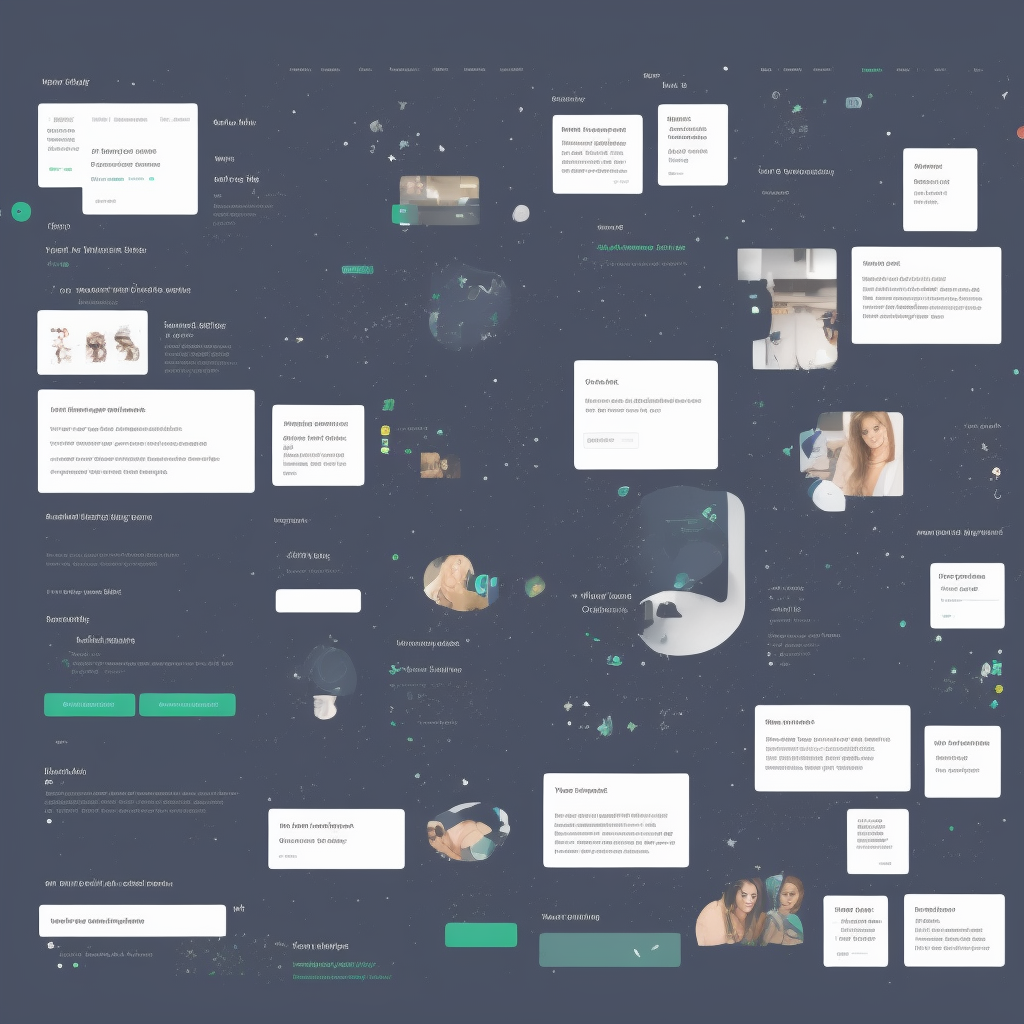Introduction
When it comes to creating a successful website, the user interface (UI) design plays a crucial role in ensuring a positive user experience. A well-designed UI can make all the difference in attracting and engaging users. In this article, we will explore ten secrets to creating a stellar website UI design that will leave a lasting impression on your visitors.
Understanding Website UI Design
Before diving into the secrets of effective UI design, it’s important to have a solid understanding of what website UI design actually entails. UI design refers to the visual layout and organization of elements on a website, with the goal of providing an intuitive and user-friendly interface. By mastering website UI design, you can create a visually appealing and navigable website that will captivate your audience.
Key Considerations for UX/UI Design
When designing a website UI, it is important to keep in mind certain key considerations that will enhance the overall user experience (UX). These considerations include designing for your target audience, understanding their needs and goals, and creating a seamless flow throughout the website. By carefully considering these aspects, you can ensure that your UI design aligns with the expectations of your users.
Researching User Needs and Goals
One secret to creating a stellar website UI design is conducting thorough research on your target audience’s needs and goals. By gathering insights into their preferences, behavior patterns, and pain points, you can design a UI that caters to their specific requirements. This step involves conducting user surveys, analyzing competitor websites, and seeking feedback through user testing sessions. The more you understand your audience, the better you can tailor your UI design to their expectations.
Creating an Intuitive Navigation
An intuitive navigation system is paramount in making your website easy to use and navigate. Users should be able to find information effortlessly and intuitively on your website. Incorporating clear navigation menus, logical categorization, and search functionality can streamline the user experience and improve overall satisfaction. Remember, simplicity is key when it comes to navigation – avoid overwhelming your users with too many options.
Designing Responsive and Accessible UI
With the increasing use of mobile devices, designing a responsive UI is essential. Ensuring that your website adapts seamlessly to different screen sizes and resolutions will guarantee a great user experience across all devices. Additionally, designing an accessible UI that can be easily used by individuals with disabilities is crucial for inclusivity. Incorporating features such as alt text for images and keyboard navigation can greatly enhance accessibility.
Optimizing Visual Hierarchy and Consistency
A well-optimized visual hierarchy ensures that important information stands out and grabs users’ attention. This can be achieved by structuring your UI design in a way that key content through elements such as font size, color contrast, and spacing. Consistency in UI design also plays a vital role in establishing familiarity and making the website easier to navigate. consistent color schemes, fonts, and layouts throughout the website will contribute to a cohesive user experience.
Choosing Appropriate Colors and Typography
The choice of colors and typography in your UI design has a significant impact on the overall aesthetics and user experience. Colors evoke emotions and convey meaning, so it’s important to choose a color palette that complements your brand and aligns with the desired user experience. Similarly, typography should be legible and easy to read across different devices. Strive for a balance between aesthetics and readability to create an engaging UI design.
Enhancing User Experience with Animation and Microinteractions
Animation and microinteractions can add depth and interactivity to your website UI design. Thoughtfully incorporating subtle animations, transitions, and microinteractions can enhance the user experience and make the interface more engaging. However, it’s important to use animations sparingly and purposefully, ensuring they contribute to the overall usability and do not distract or confuse the users.
Testing and Iterating on UI Design
To ensure that your website UI design is effective, it’s crucial to conduct testing and iterate on the design based on user feedback. User testing sessions can provide valuable insights into usability issues and help identify areas for improvement. By implementing these suggestions and continuously refining your UI design, you can create a website that truly meets the needs and expectations of your users.
Final Words
Creating a stellar website UI design requires careful consideration of various factors, from understanding user needs and goals to optimizing visual hierarchy and consistency. By following these ten secrets, you can develop a UI design that not only looks visually appealing but also provides an exceptional user experience. Remember, a well-designed UI has the power to captivate and retain visitors, ultimately driving the success of your website.


